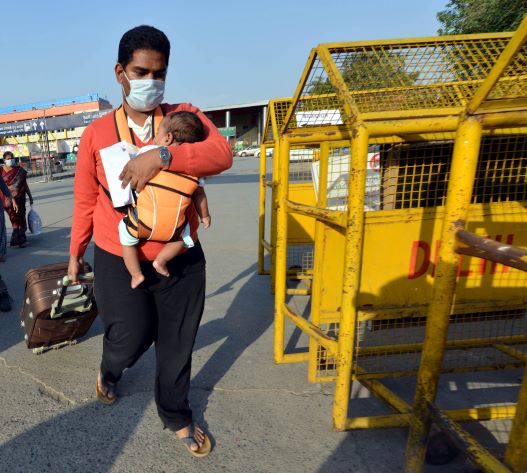NewsGate Press Network
Finally the Prime Minister agreed to Chief Minister’s demand to re-draw red & green zones as per their local requirements during the Lockdown 4.0 which comes into effect from Monday onwards.
The fourth edition of lockdown will be till 31 May 2020.
This order will be read along with the two different revised editions of ‘bluebook on containment zones’ that was issued by the Union Health Ministry late on Saturday night.
During their last (fifth in a row) virtual encounter with the Prime Minister, nearly all the chief ministers had demanded that decision to declare local restrictions within their jurisdictions should be left to them rather than being communicated from Delhi.
Since latest announcement was made late on Sunday 17 May, at 7 pm in the evening and with Cabinet Secretary holding a review meeting on this order at 9 pm, not much time was left with state administrations to announce their kind of zones.
Monday will be a busy day for most of the Chief Ministers to re-draw and publish new red-orange—green zones.
Main takeaways of Lockdown 4.0 are:
- States to decide various Zones and Activities to be allowed in these Zones; Certain activities to remain prohibited throughout the Country. The zones can be a district, or a municipal corporation/ municipality or even smaller administrative units such as sub-divisions, etc, as decided by States and UTs.
- 7 am to 7 am Night Curfew to continue to remain in force.
- Within the red and orange zones, containment and buffer zones will be demarcated by the local authorities, after taking into consideration the Health Ministry guidelines.
Activities Prohibited throughout the Country are:
- all domestic and international air travel of passengers, except for domestic medical services, domestic air ambulance and for security purposes or purposes as permitted by MHA;
- metro rail services;
- running of schools, colleges, educational and training/coaching institutions;
- hotels, restaurants and other hospitality services, except for the running of canteens in bus depots, railway stations and airports;
- places of large public gatherings such as cinemas, shopping malls, gymnasiums entertainment parks, etc.;
- social, political, cultural and similar gatherings and other large congregations; and, access to religious places/places of worship for public.


Be the first to write a comment.